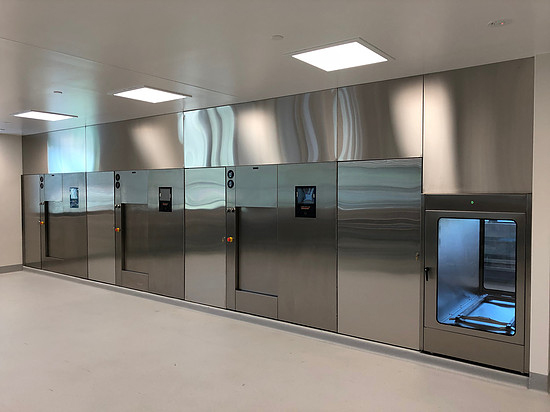Porosity is a common issue in MIG welding that can compromise the strength and integrity of your welds. Understanding its causes and how to prevent it is crucial for achieving high-quality, durable welds.
What Is Porosity in MIG Welding?
Porosity refers to the presence of gas pockets or voids within a weld bead. These pockets can weaken the weld, making it more susceptible to cracking and failure under stress. Porosity typically forms when gases such as oxygen, nitrogen, or hydrogen become trapped in the molten weld pool and are unable to escape before the metal solidifies.
Common Causes of Porosity
Several factors can contribute to porosity in MIG welding:
-
Contaminated Base Material: Surface contaminants like oil, grease, rust, or paint can release gases when heated, leading to porosity.
-
Inadequate Shielding Gas Coverage: Insufficient or improper shielding gas flow allows atmospheric gases to interact with the weld pool.
-
Improper Gas Flow Rate: Too high or too low a gas flow can disrupt the protective gas shield.
-
Welding in Drafty Conditions: Wind or air currents can blow away the shielding gas, exposing the weld to contaminants.
-
Incorrect Welding Parameters: Using the wrong voltage, wire feed speed, or travel speed can affect weld quality.
-
Moisture in Consumables: Electrodes or filler wires with absorbed moisture can release hydrogen during welding, causing porosity.
How to Prevent Porosity in MIG Welding
To minimize the risk of porosity, consider the following preventive measures:
1. Clean the Base Material Thoroughly
Before welding, ensure that the base material is free from contaminants. Use appropriate cleaning methods to remove oil, grease, rust, and paint. This step is crucial, as even small amounts of contamination can lead to significant porosity.
2. Maintain Proper Shielding Gas Coverage
Ensure that the shielding gas is adequate to protect the weld pool from atmospheric contamination. Check for leaks in the gas lines and connections. Use the correct gas mixture and flow rate as recommended for the material and welding conditions.
3. Adjust Welding Parameters Correctly
Set the appropriate voltage, wire feed speed, and travel speed for the material and joint configuration. Incorrect settings can lead to poor arc stability and increased risk of porosity.
4. Control Environmental Factors
Weld in areas with minimal air movement. Wind or drafts can disperse the shielding gas, leading to contamination of the weld pool. If welding outdoors, use windbreaks or shields to protect the weld area.
5. Store Consumables Properly
Keep electrodes and filler wires in dry conditions to prevent moisture absorption. Moisture in consumables can lead to hydrogen-induced porosity during welding.
Detecting Porosity
Porosity can often be detected visually. Look for small holes or pits on the surface of the weld bead. However, some porosity may be subsurface and require non-destructive testing methods, such as ultrasonic or X-ray inspection, to detect.
Addressing Porosity in Existing Welds
If porosity is detected in a weld, it may be necessary to remove the affected area and re-weld. Grinding out the porous section and re-welding with corrected parameters can restore the integrity of the joint.
Conclusion
Understanding the causes of porosity and implementing preventive measures is essential for producing high-quality MIG welds. By maintaining clean materials, ensuring proper shielding gas coverage, adjusting welding parameters, controlling environmental factors, and storing consumables correctly, you can minimize the risk of porosity and achieve strong, reliable welds.
For those in Mackay, Australia, seeking professional welding services, Mackay Steel offers structural steel fabrication services, ensuring high-quality welds and reliable results.
Reader’s Question:
How can I prevent porosity in my MIG welds?
Answer: To prevent porosity, clean the base material thoroughly before welding, ensure proper shielding gas coverage, adjust welding parameters correctly, control environmental factors to minimize drafts, and store consumables in dry conditions to prevent moisture absorption.
FAQs
Q: What is porosity in MIG welding?
A: Porosity refers to gas pockets trapped within the weld bead, weakening the weld’s strength.
Q: How can I detect porosity in my welds?
A: Porosity can often be seen as small holes or pits on the weld surface; however, some may require non-destructive testing to detect.
Q: What are common causes of porosity?
A: Common causes include contaminated base material, inadequate shielding gas coverage, improper welding parameters, environmental factors like drafts, and moisture in consumables.
Q: How can I prevent porosity in my welds?
A: Prevent porosity by cleaning the base material, ensuring proper shielding gas coverage, adjusting welding parameters, controlling environmental factors, and storing consumables properly.
Q: What should I do if I find porosity in my welds?
A: If porosity is found, remove the affected area and re-weld with corrected parameters to restore the joint’s integrity.
Final Thoughts
Porosity is a preventable issue in MIG welding. By understanding its causes and implementing preventive measures, you can achieve strong, reliable welds. Remember to maintain clean materials, ensure proper shielding gas coverage, adjust welding parameters correctly, control environmental factors, and store consumables properly to minimize the risk of porosity.









